Buena Vista Park: Birding Hotspot
By Kimberly Jannarone
Buena Vista is San Francisco’s oldest official park (1867), and it earns its name. It’s a hilltop forest, with winding trails and views in all directions. On a clear day, you can see the Golden Gate Bridge, the Pacific Ocean, and Alcatraz, as well as the Bay Bridge, East Bay, and Mount Diablo. While you’re gazing at the view, you’ll also notice a steady stream of birds cruising by. Pay closer attention, and you’ll see that quite a few of them are nesting, making this urban forest their home.
The park’s oak woodlands and shrubby understory entice many birds to set up shop. In the spring, a little patience will yield views of parent birds bringing food to their young, including Chestnut-backed Chickadees, Pygmy Nuthatches, Dark-eyed Juncos, Bushtits, Brown Creepers, Hutton’s Vireos, Mourning Doves, and Western Scrub Jays.
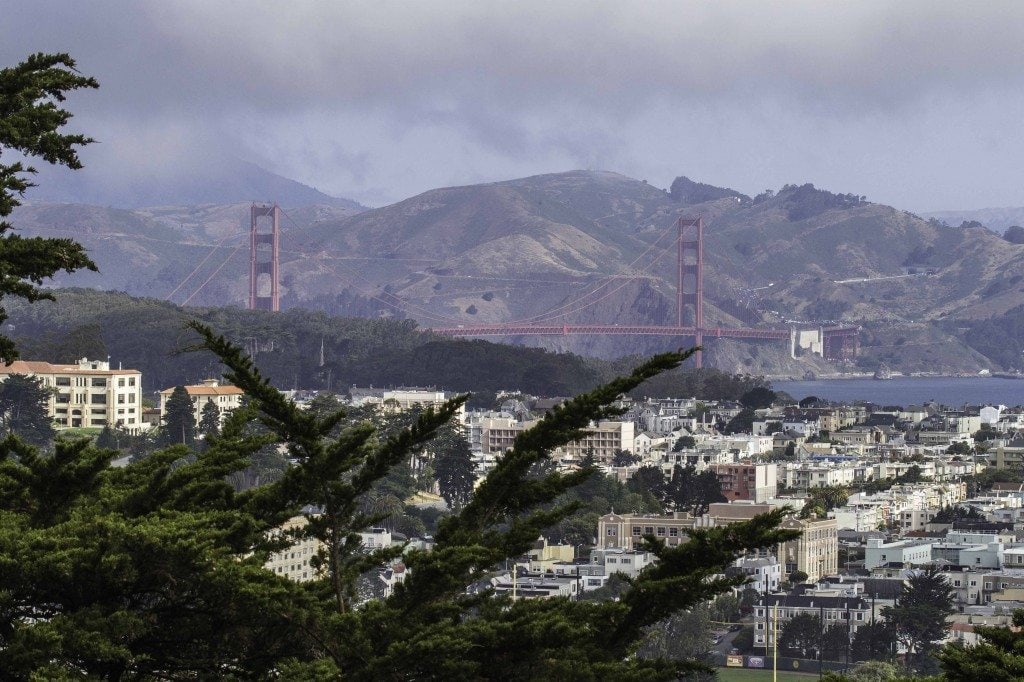
Standing in a small cluster of oaks, you can observe a Hutton’s Vireo sing its sweet warbling song, grab a bright green caterpillar, bash it against a branch, sing again, and disappear. Underneath a tall redwood or an old eucalyptus, you can hear the sweet, high song of a Brown Creeper, and then spy it ferrying a cluster of tiny black bugs in its slender, curved beak up the trunk.
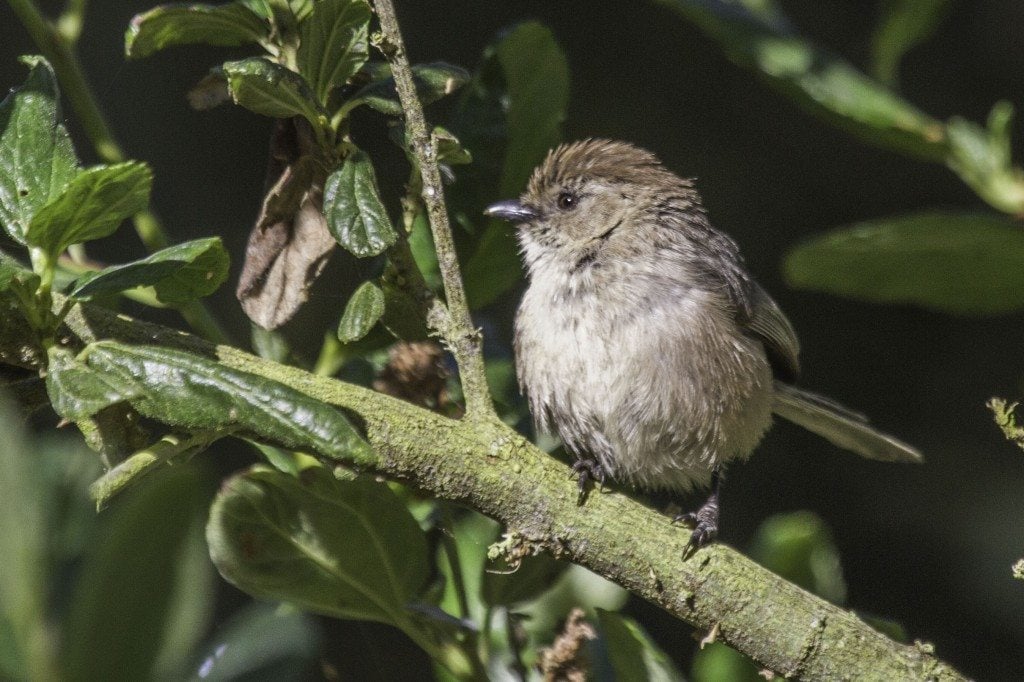
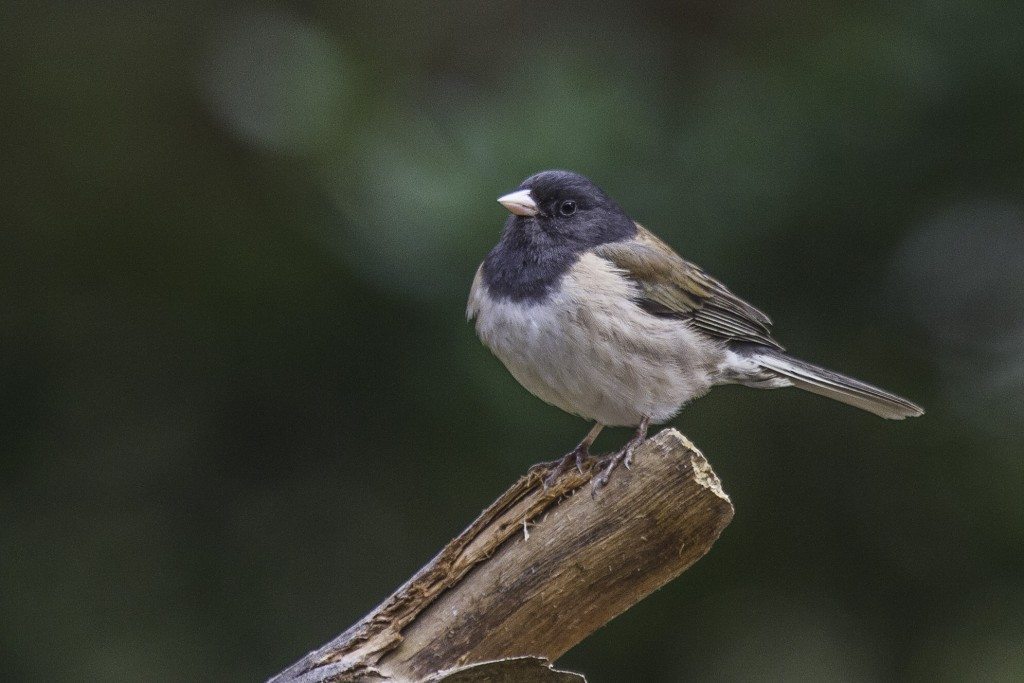
Both Allen’s and Anna’s Hummingbirds nest in Buena Vista, and they especially enjoy the plantings on the top of the hill and the recently-restored habitat on the Corona Heights side. The central hill is an ideal place to watch their aerial displays — they climb upwards and swoop down, with all of Marin as their backdrop. More nesters: Pine Siskins high in the Monterey pines, Song Sparrows in the weedy ravine on the north side, Downy Woodpeckers in the oaks, White-Crowned Sparrows near Haight Street, and Brown-Headed Cowbirds on the south side. Hooded Orioles nest in palms in near the park and bring their young to forage in the oaks near the southern boardwalk.
Spring brings gratifying migrants, including Western Wood Pewees, Cedar Waxwings, Black-throated Gray and Wilson’s Warblers, and Black-headed Grosbeaks, including one grosbeak who lingered well into winter last year in native plantings on the Corona Heights side. Olive-sided Flycatchers come through, and each of the three years I’ve been watching, one claims a tall snag near the southern side, sallying out after insects and returning to its favorite perch.
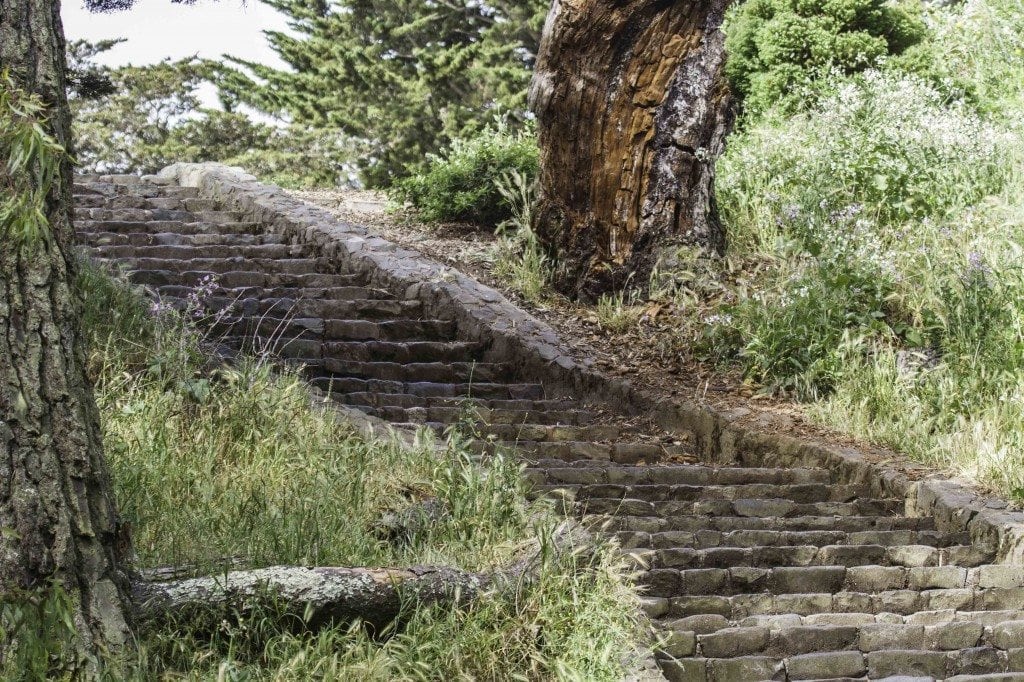
I moved to Duboce Triangle in 2009 and got into city birding the next year. I make the steep hike up to the park regularly, and local birders have informed me that Buena Vista is my “patch.” The rewards of patch-birding became apparent quickly. I’ve gotten to know the park’s seasonal cycles, its hazards, and its avian history.
The migrants are charming in their regularity, and this is something that getting to know a spot brings home. I find myself thinking seasonal thoughts I never had before: Is the Golden-crowned Sparrow spot deserted now? What’s that Hermit Thrush still doing here? Is that a swift already? Hello again, flycatchers. Welcome back, sparrows. Oh! The White-throated Sparrow that always hangs out in the shrubs by the entrance has returned for another season.
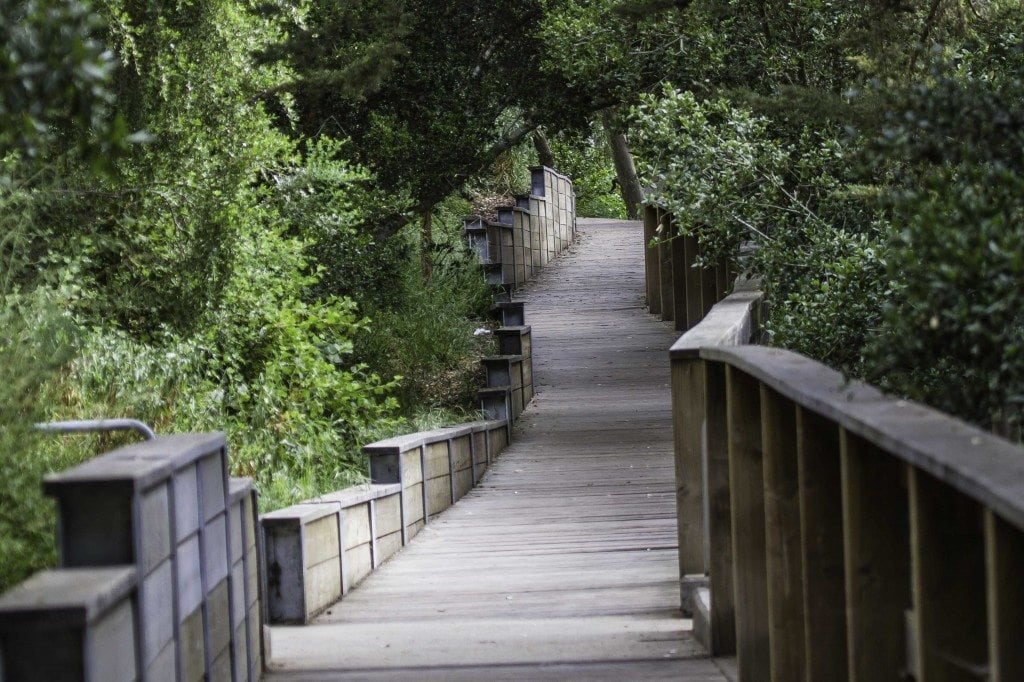

Buena Vista isn’t perfect. But it’s closer to perfect than it was, apparently, before I moved here. Tales of typical urban woes abounded (syringes, homeless encampments, cruising) — you can still see their traces on Yelp reviews of the park — but it seems that a recent renovation has mitigated much of this. You’ll still see a few camp-outs, and signs go up on trees in regular intervals reminding people that public sex isn’t legal, but the park is by no means threatening on the whole — you’re more likely to encounter yoga and joggers than anything else. Native plantings on the Corona Heights side and new boardwalks have made this a lovely area for birding: while listening to the wrens chattering in the brambles by the path, you can watch for kestrels, hawks, swifts, and swallows hunting between Buena Vista and Corona Heights.
The biggest hazard of Buena Vista for me is that it has destroyed my exercise regime. I no longer fool myself that I’m going to jog when I bring my binoculars up the hill. And playing tennis on the magnificent courts (overlooking the city) usually results in me missing the ball because I’ve looked up to watch an overhead hawk. I’m a terrible hiking companion here now: whereas I used to show friends the sights of the city, now I find myself interrupting a walk for five minutes to stand stock still and watch — as I did last month — a Cassin’s Vireo foraging in an oak.
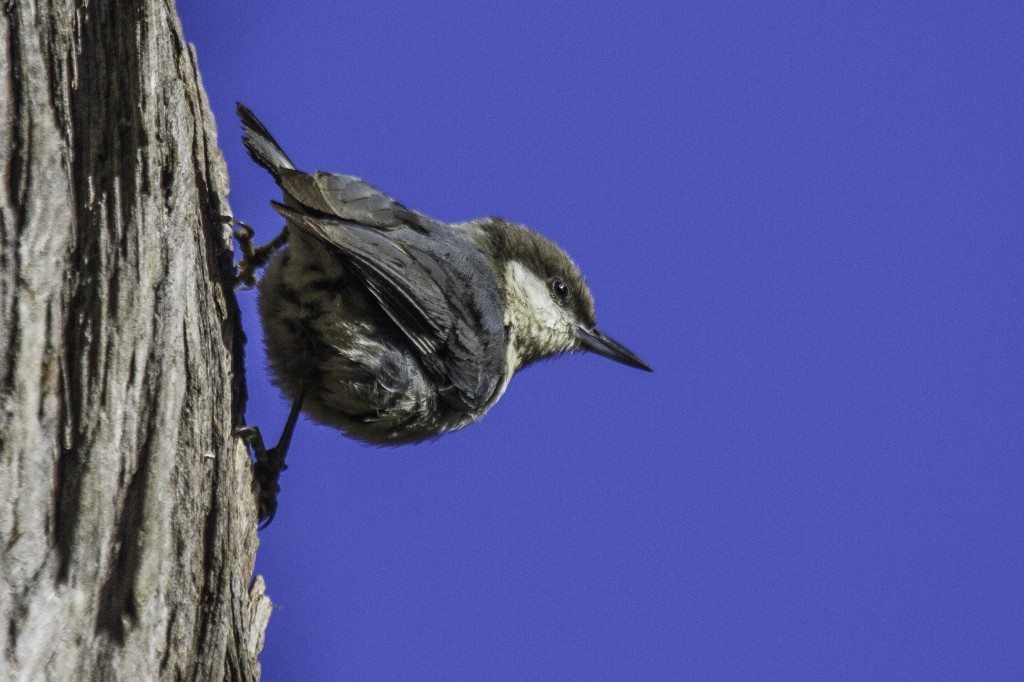
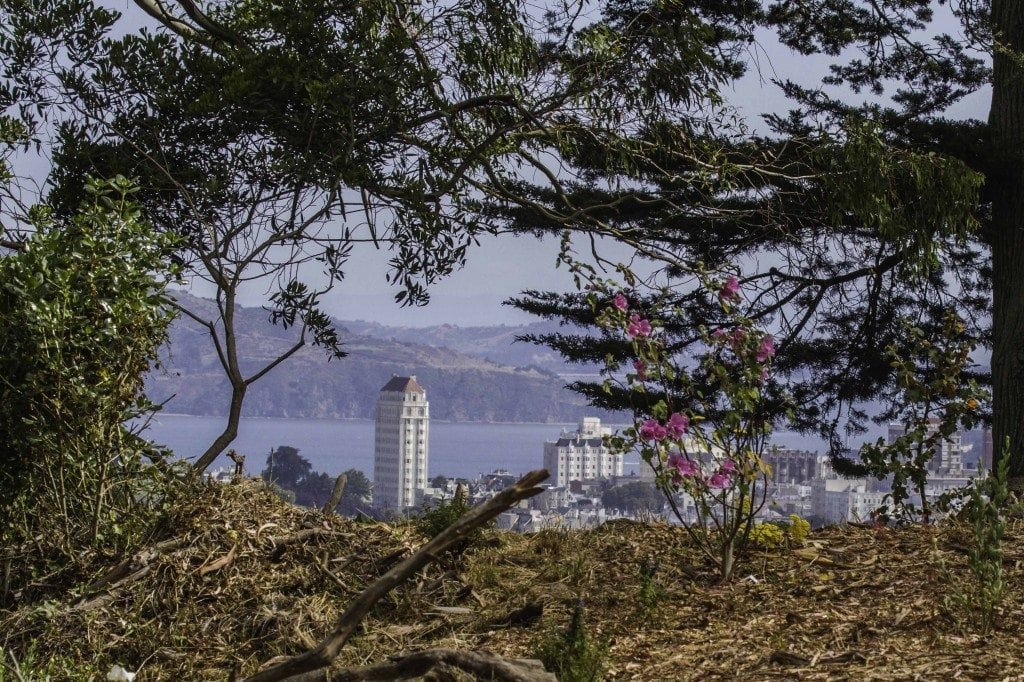
It’s impressive what a good spot for birds Buena Vista is, in spite of the park’s ultra-urban locale, its complete lack of water, and its bevy of curious, snuffling, off-leash dogs. (There’s an off-leash dog run in the park by the Haight Street side, but you can observe a steady stream of dogs galumphing freely under the “keep dogs on leash” signs everywhere.) It can be windy on the north side (which is probably why I favor the south), and there are some areas near the middle that are often NFZs (no fly zones). But most of the park has enough avian regulars to keep things interesting, and there are always surprises.
One memorable surprise for me was the time I saw not one but two Red-Breasted Sapsuckers in the park. While the park bears many ghostly remnants of sapsuckers of years past — neat little rings of holes drilled into bark, slightly rough around the edges, clearly aged by time — I hadn’t actually seen any sapsuckers my first year birding there. Then, last year, two. One had a regular tree overhanging Buena Vista Avenue East. It was so regular that I could drive to the tree, look up, see the sapsucker, and move on. I even got to know its Yellow-Rumped Warbler sidekick, who hung by its side for months, profiting from the sapsucker’s drilling work. Last year, the sapsucker went off to migrate and the tree it had frequented was cut down. Did it return to the park, find another tree? I don’t know. But I’ll look for it.
When you’re observing the view in Buena Vista, it really is worth your while to observe those cruising birds. Two years ago, I watched a Red-shouldered Hawk slam into a pile of leaves, emerge with its wriggling prey, and settle on a low branch overhanging the sidewalk. People walked by underneath, a few feet from the bird, unaware. I kept quiet as person after person missed this spectacle, not knowing that the white puffs drifting down on their heads were rat fur.
This is the joy and the mania of birding a “patch.”
—————————-
Location: The park spans the hill between San Francisco’s lower Haight Street and Buena Vista Avenue.
Hours/Fees: Open sunrise to sunset. Free.
Habitat: Varied. Oak woodland, eucalyptus, some redwoods. No water feature.
Key Birds: Year-round: Anna’s Hummingbird, Mourning Dove, Scrub Jay, Hutton’s Vireo, Brown Creeper, Chestnut-Backed Chickadee, Pygmy Nuthatch, Bushtit, Red-Shouldered Hawk, Downy Woodpecker, Song Sparrow, California Towhee, Dark-Eyed Junco, Pine Siskin, Purple Finch. Winter: Hermit and Varied Thrush, Ruby-Crowned and Golden-Crowned Kinglet, Red-Breasted Nuthatch, Red-Breasted Sapsucker, Northern Flicker, Townsend’s Warbler, Orange-Crowned Warbler, Fox and Golden-Crowned Sparrow. Spring: Olive-Sided Flycatcher, Western Wood Pewee, Cedar Waxwing, Northern Flicker, Allen’s Hummingbird, Warbling Vireo, Black-Headed Grosbeak, Black-Throated Gray and Wilson’s Warbler.
Ease of Access: Some paved, but mostly dirt paths. Wheelchair accessible in parts. Most paths include steep climbing.
Getting There: There is a fair amount of on-street parking. The park is also accessible by bus.
Nearby services: The park boasts tennis courts, but no restrooms.
Nearby cafes/ restaurants: The park is adjacent to the Lower Haight as well as the Castro, with plenty of cafes. The nearest spot for a sandwich and drink is Courtney’s, on Castro and 14th Street.
Guided walks: There are currently no guided walks in Buena Vista.
For more information: http://sfrecpark.org/destination/buena-vista-park/
———————————–
Kimberly Jannarone moved to San Francisco in 2009 and was welcomed into the birding community by GGBA walks at Corona Heights and Golden Gate Park, mostly led by Dominik Mosur. She’s a theater director and scholar and professor of Theater Arts at UC Santa Cruz. When she moved to Santa Cruz in 2001, she was introduced to the joys of West Coast birding by the inimitable Todd Newberry. To get an outdoor break from rehearsing plays and writing, she birds and does habitat restoration at San Francisco’s Pier 94.
